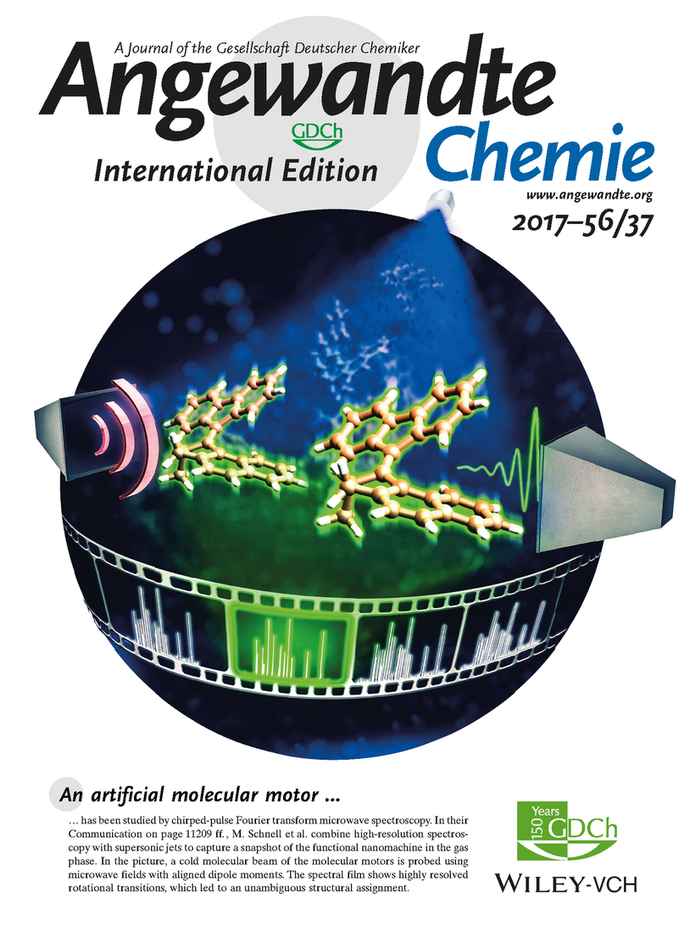Microwave spectroscopy reveals structural details of motor molecule
Rotational spectroscopy paves the way to investigate nano-machines in action
5 September 2017

The research has been published this week in a special open-access issue of the journal Angewandte Chemie International Edition on the occasion of the celebration of 150 Years of the German Chemical Society GDCh.
Feringa's well known nano-machine consists of a single molecule made up of 27 carbon and 20 hydrogen atoms (C27H20). Like a macroscopic motor it has a stator and a rotor, connected by an axle. Its atomic make-up was determined before with X-rays, but this required the molecules to be grown into crystals, where they are interacting with each other.

The new study investigated free floating isolated molecules in a gas. This enables a more direct investigation of the molecule, free from any external influences. As a result deviations could be established from the structure previously determined with X-rays. Furthermore, the research paves the way for investigation of the motor molecules in action.
Microwave field
First author of the study is Dr Sérgio Domingos, a former PhD student of HIMS professors Wybren Jan Buma and Sander Woutersen. Domingos currently holds a Humboldt Fellowship for postdoctoral researchers and performs his research at the Max Plank Institute for the Structure and Dynamics and Matter and the DESY research centre, both in Hamburg, Germany. There he applies state-of-the-art rotational spectroscopic techniques to study the structure and dynamics of cold and controlled molecules.
Domingos and Buma discussed the opportunities of studying Feringa's molecules with these advanced techniques, leading to the now published research project led by DESY Leading Scientist professor Melanie Schnell.

In the case of Feringa's motor molecule the analysis was far from straightforward. The researchers had to analyze more than 200 spectral lines and match their data with quantum chemistry calculations. Currently the motor is the largest molecule ever successfully investigated with microwave spectroscopy.
Studying motor dynamics
The rotational spectroscopy opens the possibility to study the dynamics of the motor molecule. After excitation with light the rotor goes through an intermediate state that lasts about three minutes – long enough to be investigated with microwave spectroscopy. The researchers are already planning such investigations from which they hope to learn in detail how the molecular motor works.
This news item has been based on an earlier press release issued by the DESY research centre. The research was performed at DESY and the Max Planck Institute for the Structure and Dynamics of Matter in Hamburg, with strong involvement from the Universities of Amsterdam and Groningen. The Hamburg Centre for Ultrafast Imaging and the Alexander von Humboldt Foundation supported the work.
Publication
Cold snapshot of a molecular rotary motor captured by high-resolution rotational spectroscopy; Sérgio R. Domingos, Arjen Cnossen, Wybren J. Buma, Wesley R. Browne, Ben L. Feringa and Melanie Schnell; Angewandte Chemie International Edition, 2017; DOI: 10.1002/anie.201704221